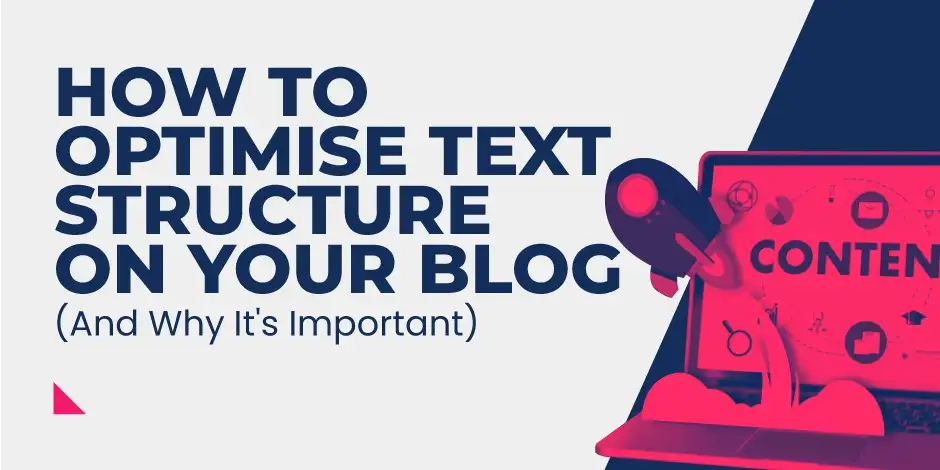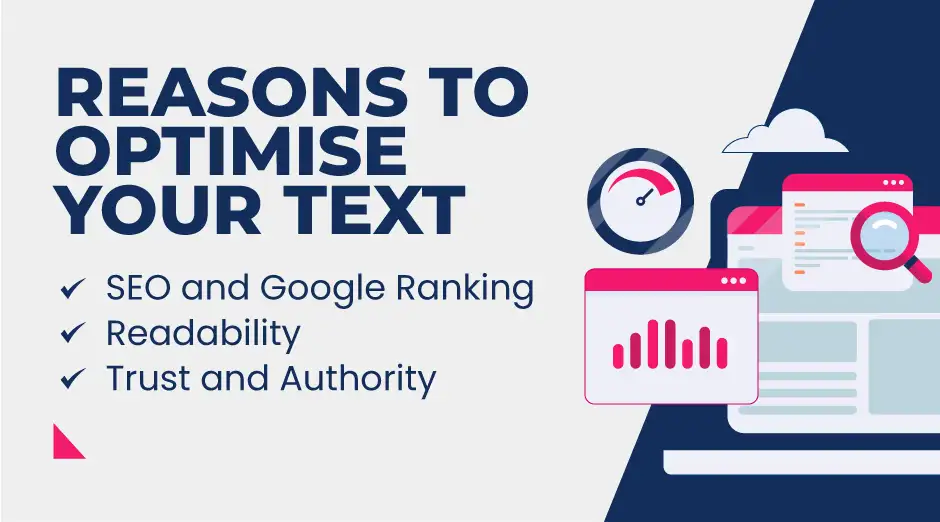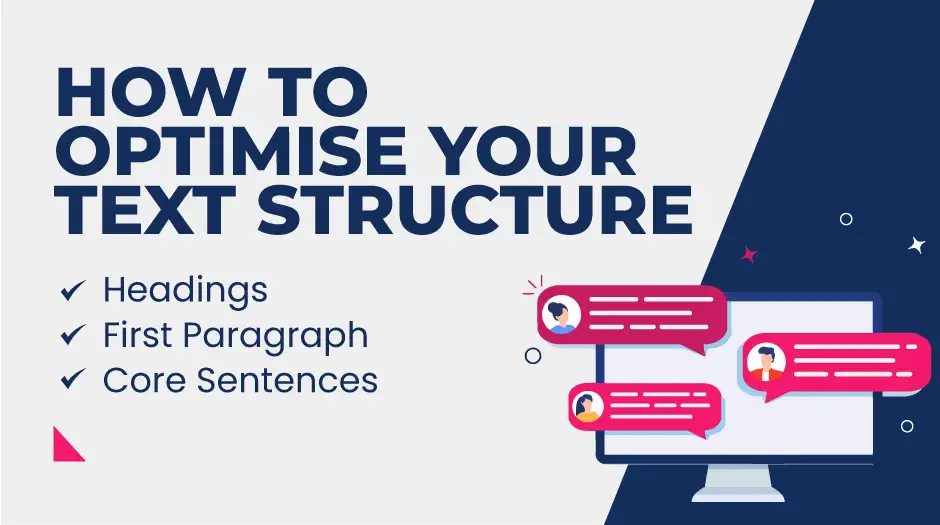

How to Optimise Text Structure on Your Blog (And Why it's Important)
It’s universally accepted that creating unique content and attractive visuals help blog posts rank on Google. But there’s one important aspect many of us forget about that undermines our efforts: the structure of the text.
Structuring your blog is crucial for both your readers and Google’s ability to understand your content. If you have given little thought to the composition of your text, your visitor count, SEO and Google ranking will suffer.
Read on to find out exactly why structure is important, how to optimise your text structure and how it will help your blog rank on Google.
How to Optimise Text Structure on Your Blog (and Why It’s Important)

Before we dive into how to optimise text structure, it’s worth understanding exactly why the layout of your text is so important for your content. Here are a few reasons why you should focus on it.
Google Ranking
Firstly, you want your content to be found, and for that, you need to rank on Google. Even though it’s hard to keep up with the ever-changing Google algorithms, there are steps you can take to help boost your position in the search engine results pages (SERPs).
When you produce a piece of content, Google will scan your text and deduce its ranking based on several factors, including:
◾ Semantic Closeness: Google uses semantics to better understand user search intent through contextual meaning. Having similar words in close proximity within your text will help your content rank, as it provides the most accurate search results based on search intent, query context and the relationships between words.
◾ Synonyms: Including synonyms not only makes content more readable, but it also helps Google to identify the most relevant sites that answer a user’s query. A clearer text structure featuring pairs of synonyms will help boost your ranking.
◾ Headings: Including informative headings (employing the correct HTML heading tags and relevant keywords) will make Google happy and help your blog soar up the rankings.
◾ Well-Written Content: Well-structured text is easier and more enjoyable to read than disorganised text. It helps to keep your readers engaged, which reduces your bounce rates. Furthermore, quality content gains more social media engagement (likes and shares), which all contribute to Google rankings.
When it comes to ranking on Google, including the above features will help boost your position in the SERPs. But you also need to create a good structure for Google to efficiently “read” and analyse your content.
Readability
Once users have found your site, you need to ensure that your content is user-friendly to keep them engaged, on the page and inspired to explore more of your content.
Website visitors tend to concentrate on headings and the first lines of paragraphs and will often scan a blog to find the information they’re looking for. If they encounter a page that has terrible structure, is hard to read or is confusing, they will likely bounce straight back to Google to find a better site.
Good text structure improves readability in several ways:
◾ It helps readers scan for the information they are looking for.
◾ It makes content easier to understand and digest.
◾ It makes your content more visually appealing, and therefore easier to read.
Google scans and “reads” content in a very similar way to humans, so optimising your text to be readable is essential for both ranking and user experience.
Trust and Authority
In addition to Google ranking and readability, creating a good text structure is vital for building trust and authority with your audience. Even if you write the most engaging and interesting blog post, if your text lacks structure, users will not want to (or be able to) read it.
Optimising the structure of your text generates trust with your readers. Content that is presented in a structured and professional style can position you as an authoritative writer on your chosen subject. The fact that 38% of internet users consider a professional web design layout as a crucial trust signal is reason enough to optimise your content structure.
How to Optimise Your Text Structure

Now that you are equipped with an understanding of why text structure is important, let’s delve into exactly how you can optimise the structure of your content.
The most important things to focus on are the headings, the opening paragraph and the core sentences (usually the first line of each paragraph throughout the piece). Read on to find out why.
How to Structure Your Headings
Headings are important not only for organisation and structure but to also help users and Google read and understand your text. Both will scan your headings to gain an understanding of your content, so it’s crucial that you optimise every heading.
Here are a few tips on how to structure your headings:
◾ Create attractive and informative headings that introduce the text below it.
◾ Include keywords in headings to inform readers and Google what your content is about.
◾ Use HTML heading tags. Use H1 for your title, then H2 and H3 for subheadings.
◾ Keep headings short so readers can scan them quickly.
Your headings should follow a logical structure, with H2 headings introducing a topic and subsequent H3 headings covering more specific details. A well-structured heading with correct HTML tags, keywords and information will help boost your ranking on Google.
How to Structure Your First Paragraph
Your opening paragraph will be the first thing readers will look at after the title of your post. As you’ll only have a few seconds to pique their interest and stop them from hitting the back button, you need to make it striking from the very first sentence.
Make sure you structure your first paragraph to include:
◾ A clear explanation of what your piece will be exploring.
◾ Clarification for how your piece will provide the solution to your reader’s problem(s).
◾ Your focus keyword(s).
The first paragraph should be structured in such a way to benefit both your reader and your chance of ranking higher on Google.
How to Structure Core Sentences
The first sentence of each paragraph—also known as the core sentence—should be the most important within that paragraph, as readers tend to scan through the first sentence under each heading.
Your core sentences should be structured to:
◾ Introduce what the paragraph is about.
◾ Contain essential information.
◾ Include your keyword(s), as Google pays more attention to these sentences than subsequent ones.
If you’re continuing to structure your text well, then your keywords should naturally appear in your core sentences without too much worry.
Optimising Text Structure Is Essential
Optimising your text structure by paying particular attention to headings, the first paragraph and the first line of every subsequent paragraph is vital for both your readers and users. By writing well-structured and engaging text, you will improve your chances of attracting and keeping readers on your blog, as well as boosting your SEO ranking on Google.
This blog was written by Georgia Fitzgerald in 2016 and updated by Charlotte Osborn in 2021.